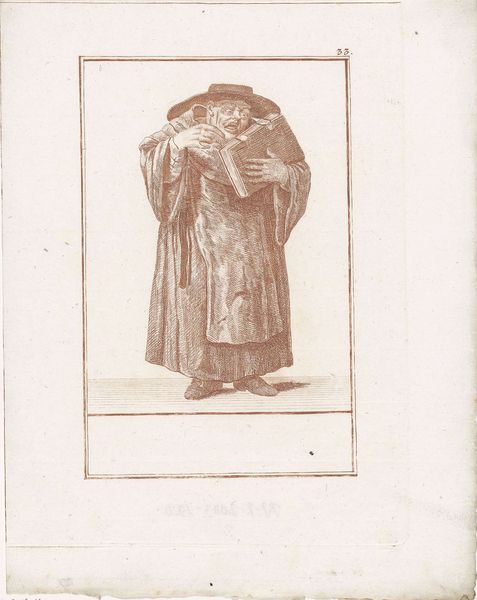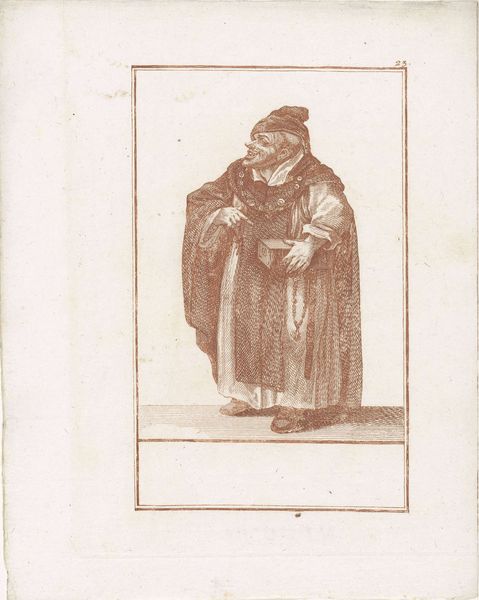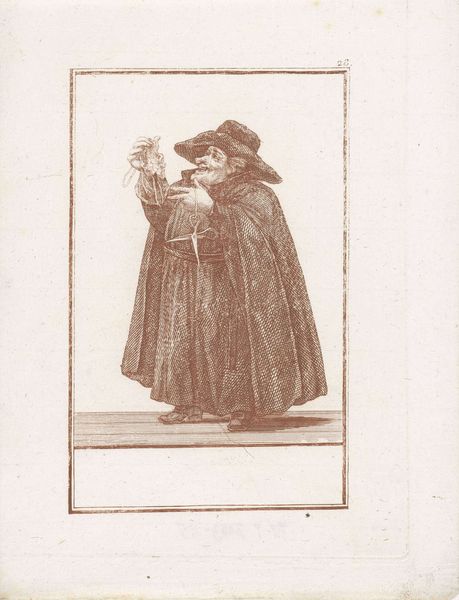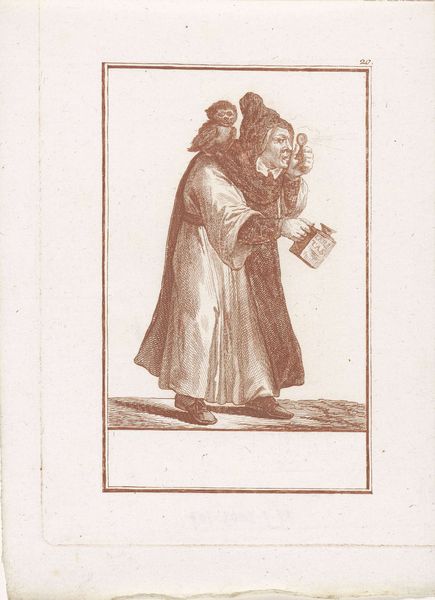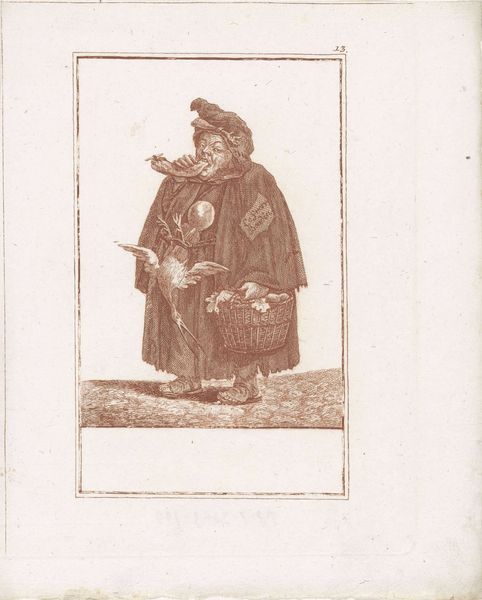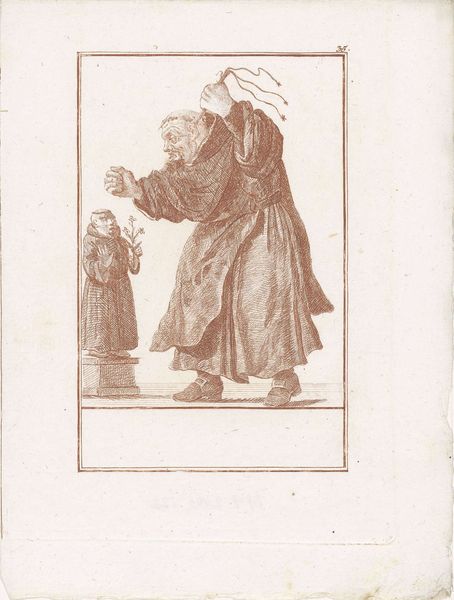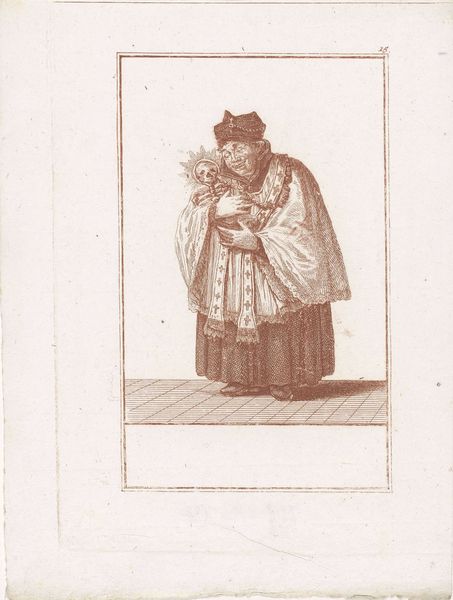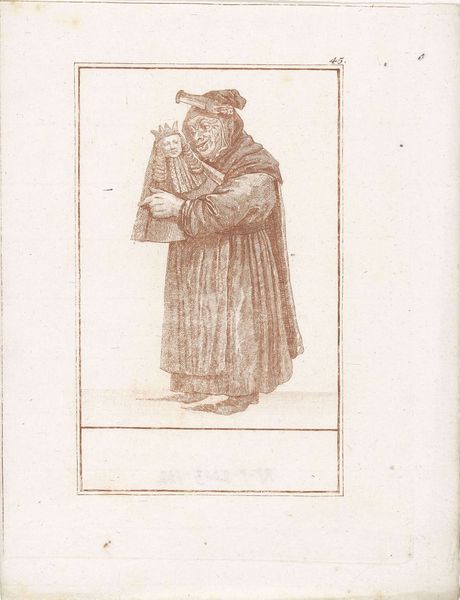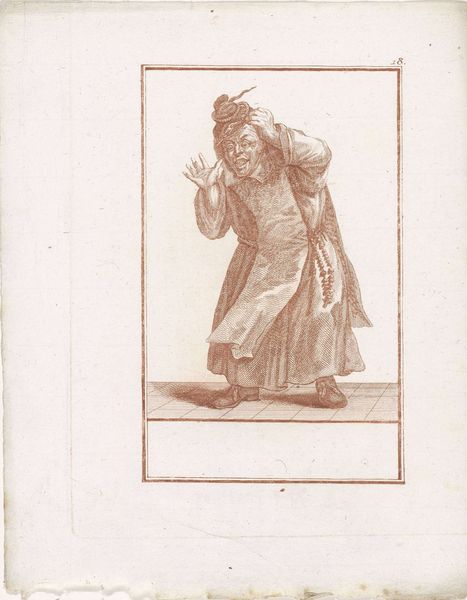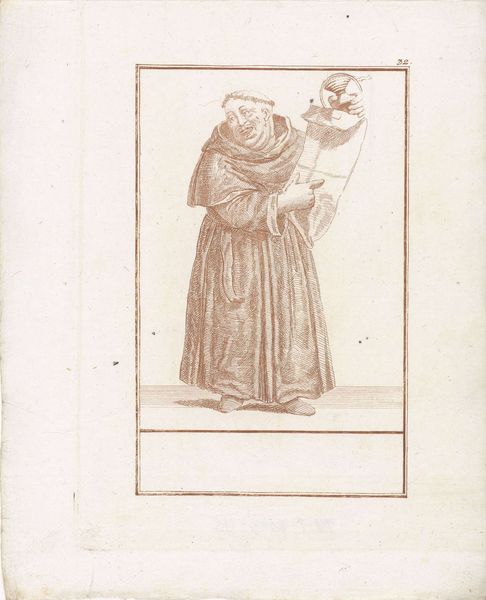
print, engraving
#
portrait
#
baroque
# print
#
old engraving style
#
figuration
#
genre-painting
#
engraving
Dimensions: height 233 mm, width 174 mm
Copyright: Rijks Museum: Open Domain
Curator: Looking at this piece, dated to 1724, what catches your eye first? It’s called “Dikke monnik, met voedingswaren beladen” by Jacob Gole, rendered as an engraving. Editor: Immediately, the weight – both literal and perhaps metaphorical. He’s completely engulfed by what he’s carrying, that enormous bundle, seemingly all foodstuffs. The folds in his robe and the straining posture emphasize the heaviness of the load. It feels…excessive. Curator: Excess indeed. Gole’s era, and the Baroque style it reflects, grappled with social disparities. We can read this image as a commentary on the Church’s affluence versus the struggles of the common person, particularly in the context of access to sustenance and religious authority. Consider that while the common folk struggled, certain religious figures accumulated wealth. Editor: The symbols of the food, though generalized, hint at more than mere nourishment. Are these suggestions of feast over famine, indulgence against necessity? This Monk’s robes, his physical size - they resonate as symbols of prosperity, setting up a tension with ideas about faith, simplicity, and sacrifice that are central to monastic life. Curator: Precisely. It presents the complicated dynamic of power and privilege, class, and identity – a system sustained by access, or the denial thereof, to necessary provisions. His downcast gaze further suggests awareness of the impropriety, a shared understanding that makes the image almost…satirical. Editor: The limited color palette accentuates this austerity, further implying scarcity for all but those in power, like this monk. This stylistic constraint forces us to focus on the contours, the expressions and, fundamentally, what’s being hoarded. It creates an unforgettable statement using very little visual 'noise'. Curator: Absolutely. By using these very techniques, Gole situates the artwork in an active political, artistic, and social dialogue about inequities – inequalities based on economics and social class. The engraving becomes more than just a historical depiction, but rather a piece of visual activism that is also culturally sustained in the world today. Editor: It is a testament to the enduring power of visual symbolism, really. How even a seemingly simple image can unlock layers of meaning when we understand the weight of what it carries. Curator: Indeed, an engraving of great historical importance, revealing persistent systemic struggles we still observe to this day.
Comments
No comments
Be the first to comment and join the conversation on the ultimate creative platform.

